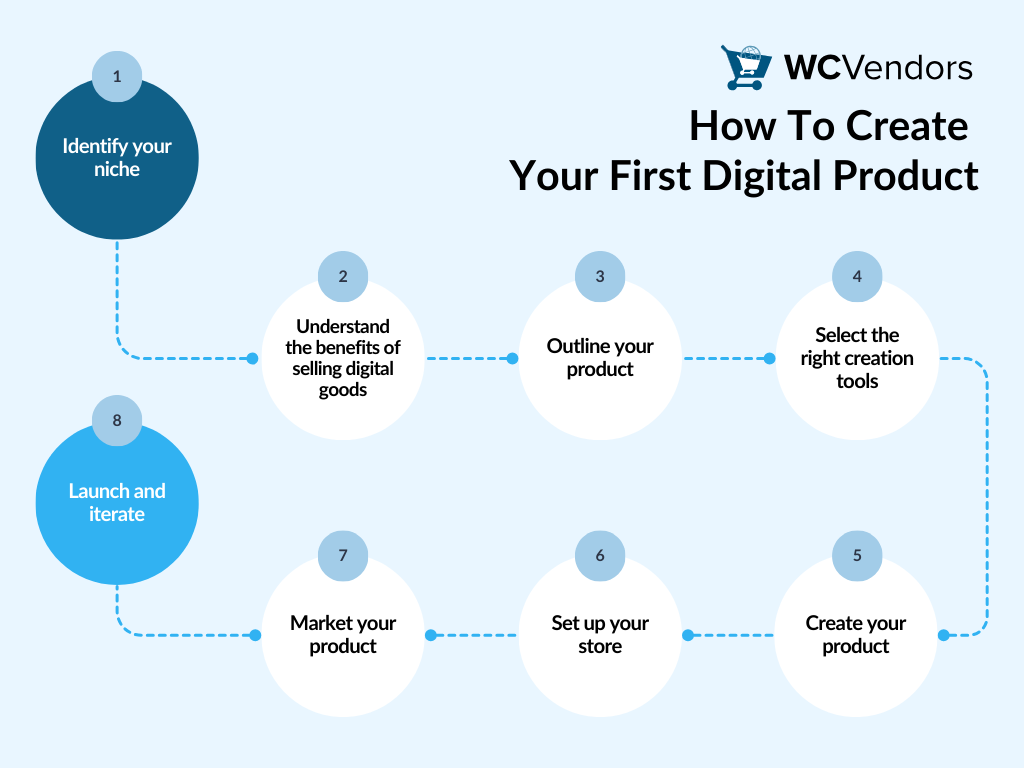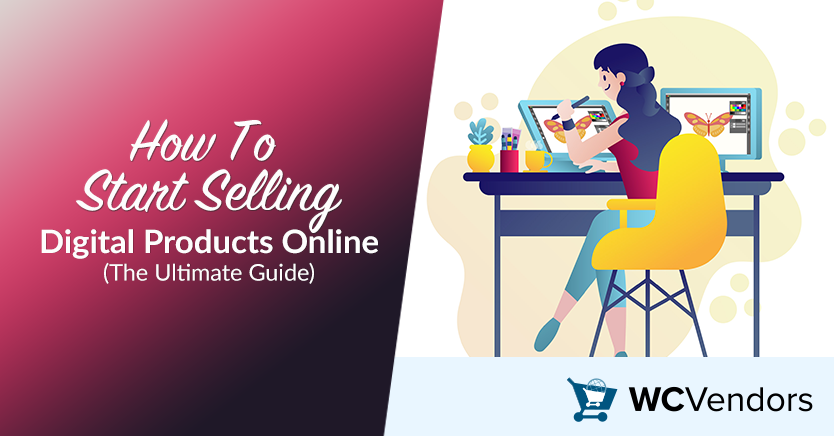
Did you know the e-learning market is expected to soar to USD 848.12 billion by 2030, with a growth rate of 17.54% each year? This growth is part of what makes learning how to start selling digital products such an attractive and promising opportunity.
Unlike physical products, digital products enable you to save on costs, earn money even when you’re not actively working, and sell to anyone anywhere without the need to ship anything. This could be your chance to join a booming digital economy. This opportunity sounds great, doesn’t it?
This comprehensive guide will help you learn all you need to get started and do well on this exciting path. So, let’s get started!
Digital Vs. Physical Products
The main difference between digital and physical products is simple. Physical products are things you can hold and need space to keep. They don’t have a physical form. You keep them on a computer, smartphone, or online in the cloud.
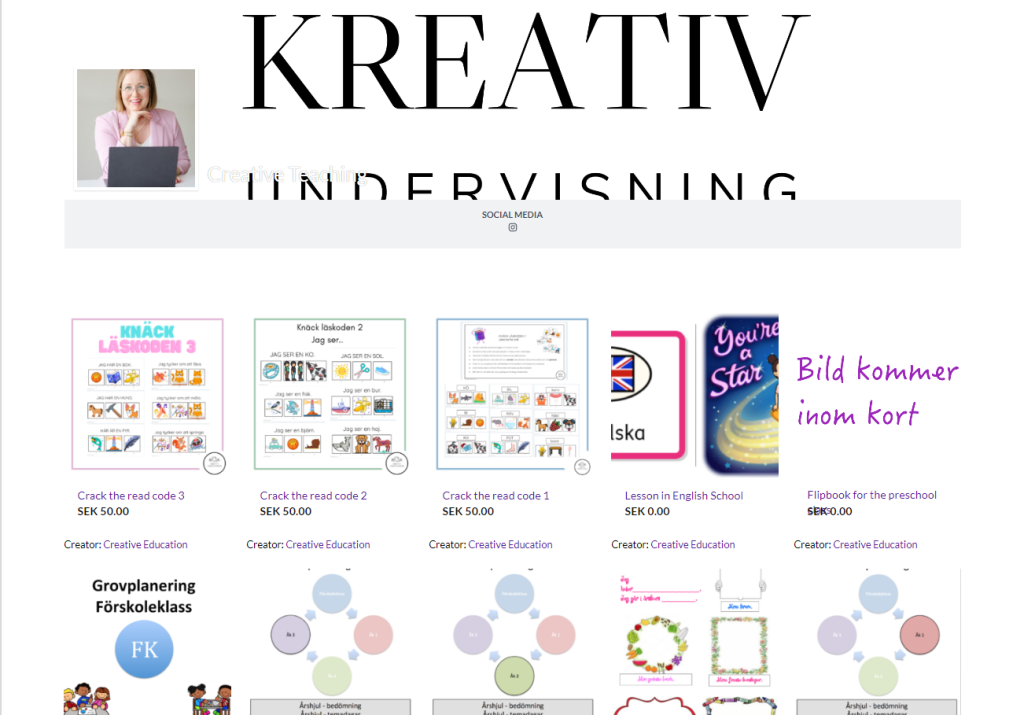
Here’s what sets digital goods apart:
- Costs: They are cheaper to make and send to customers than physical items. Once developed, they can be distributed infinitely without extra charges.
- Storage: You don’t need a shelf or a room to store digital products. Basically, they are kept on online platforms, allowing for worldwide access without physical constraints.
- Delivery: The delivery of digital goods is electronic, either via download or direct online access. Thus, there’s no waiting for delivery trucks; customers get them right away.
- Scalability: Low overhead costs make digital goods more scalable. Sellers can reach a vast number of customers without inventory concerns.
- Accessibility: With an internet connection, they can be used from any location, broadening the potential market reach for sellers.
Is selling digital products profitable?
Absolutely!
The costs to start and keep things going are low, it’s easy to grow, and you can reach customers everywhere. For example, once you make a digital product like an app or an online course, you can sell it over and over without having to make more or ship anything. This means you can earn more money without extra work, which is great for making profits while you sleep.
Also, as folks move towards using digital stuff for education, fun, and work, there’s a growing need for these products. This opens up significant opportunities if you’re looking into how to start selling digital products. Selling digital things can be an excellent opportunity since it saves on costs and reaches customers all over the world. Sounds good, right?
Now that we’ve covered the basics of what sets digital products apart, you might be wondering about the types of products you can sell.
Read on further!
What Is The Best Digital Product To Sell Online?
When considering how to start selling digital products, selecting the best product to sell online really depends on what you’re good at and what people are looking for. In general, products that are really valuable and match what a certain group of people need are the ones that make the most money.
So, if you have a lot of knowledge about something specific, you could make and sell courses or e-books. Or, if you’re great at making art, you might sell your artwork or license it for others to use.

The key is to find a product that uses your strengths, fills a need in the market, and keeps your customers happy. This way, you can stand out even when there are other people selling similar things, and you can really connect with the people who want to buy your product.
What Digital Products Can You Sell?
Before you get going, think about the types of digital products you want to sell. There’s a big world of electronic goods with plenty to choose from. As you learn how to start selling digital products, we’re going to check out five types of digital items that might spark your interest and suit what you’re looking to do.
1. Online courses and educational products
Nowadays, learning often happens online, creating a big chance for you to make money by sharing your knowledge. You can make and sell courses or share downloadable guides and host webinars. If you know something special or useful, this is a great way to earn from it. You can also create podcasts and e-books.
2. Licenses for digital assets
If you’re creative, consider selling the rights to use your digital works. This could be anything from stock photos and WordPress themes to video clips. You can sell these on your own website or marketplaces. However, keep in mind that some platforms might take a commission on your sales.
3. Music and art
If art or music is your passion, selling your creativity online has endless potential. You could sell bits of songs for ringtones or digital prints online.
A great real-world example of how a digital product business can scale successfully in this space is Sonniss, an audio marketplace that used WC Vendors to build a thriving platform for selling sound effects and other audio assets.
Their story demonstrates the potential for creatives to turn niche audio content into a scalable digital business.
4. Digital tools and templates
Businesses and professionals often look for digital tools and templates to save time and make things run smoother. This category includes everything from software plugins and design presets, to graphic templates and UX kits. Offering these can be very helpful for your audience and profitable for you.
5. Memberships
Instead of selling products separately, you could bundle them in a membership subscription. This approach offers continuous value to your customers and steady earnings for you. Memberships might include exclusive online classes, fitness programs, business tools, or digital content, helping to build a community around your products.
Setting Up Your Digital Storefront
When learning how to start selling digital products, WC Vendors is your ultimate solution, especially for WordPress users. It not only transforms your website into a multi-vendor marketplace but also offers various extensions to cater to specific needs without monthly fees.
Here’s how you can leverage WC Vendors’ offerings to sell your digital products:
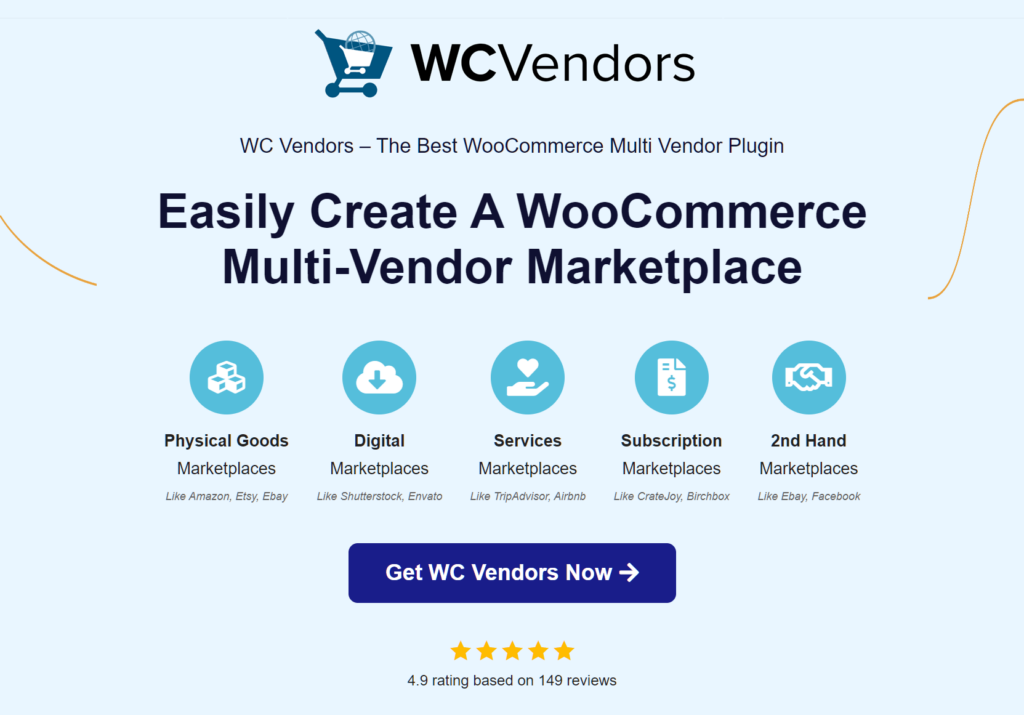
- WC Vendors Membership: Ideal for selling digital magazines, exclusive content subscriptions, or any recurring content. This feature allows you to create membership plans that provide continuous value to your customers, ensuring steady income.
- WC Vendors Subscriptions: Perfect for podcasts or online courses, offering subscription plans that automate customer charges at regular intervals for a consistent revenue stream.
- WC Vendors WooCommerce Simple Auctions: Great for unique digital products like NFTs (Non-Fungible Tokens), rare digital artwork, or collectibles. This feature allows you to run auctions on your marketplace, engaging customers in competitive bidding, and maximizing the value of your digital goods.
- WC Vendors WooCommerce Bookings: Great for artists providing personalized digital services, enabling direct booking of appointments or services, simplifying the process and improving satisfaction.
Benefits of using WooCommerce and WC Vendors:
- WC Vendors Pro extends WooCommerce, enabling a complete multi-vendor experience that allows for an array of digital product types and enhanced store functionality.
- With WC Vendors Pro, you can offer a customized experience for vendors with branded vendor dashboards, advanced front-end product management, and the ability to create individual commission plans and store policies.
- WC Vendors gives you complete marketplace control, with adjustable commission rates for sellers or items and efficient vendor and product approval from your WordPress admin.
- WC Vendors Pro grows with your business, supporting unlimited vendors, products, and orders, plus offers regular updates and priority support.
Now that your online store is ready, the next exciting step is creating your first product. This part of the journey is simple but exciting. With some basic steps, you can see your digital product ideas come to life.
Ready to get started? Let’s jump right in!
Creating Your First Digital Product
Venturing into the digital product business can be an exciting and rewarding journey. If you’re an artist, musician, or expert looking to share what you know, learning how to start selling digital products is important. It’s the first step to making money consistently, without ongoing work.
Here’s a streamlined guide to help you transition from an idea to a sellable product.
Step 1: Identify your niche
Begin with identifying product ideas that resonate with your skills or passions, especially if you’re exploring how to start selling digital products. Popular digital products include e-books, courses, digital art, music and audio files, and licensed digital content. Consider the types of products that not only interest you but also have a demand in the market.
Step 2: Understand the benefits of selling digital goods
Selling digital goods comes with numerous benefits such as the ability to generate passive income, the ease of distribution, and the lower overhead costs compared to physical products. Embrace these benefits as you craft your product.
Step 3: Outline your product
Start shaping your product idea. If you’re creating digital art, sketch out your concepts. For online courses, outline the chapters or modules. Musicians, plan your tracks or compositions. Basically, this phase is about transforming your abstract idea into a structured plan.
Step 4: Select the right creation tools
Depending on your chosen product, you’ll need appropriate tools:
- For art, software like Adobe Illustrator or Procreate is invaluable.
- Music and audio creators can benefit from tools like GarageBand or Ableton Live.
Pick tools that align with your skill level and budget, many of which offer beginner-friendly options.
Step 5: Create your product
This step is where your idea comes to life. It may involve writing, recording, designing, or programming. Focus on creating high-quality content that provides value to your customers. Remember, if your product requires licensing, ensure you have all the necessary rights and documentation.
Step 6: Set up your store
To market your products, you’ll need an online storefront. Platforms like WC Vendors caters to beginners, providing straightforward setup procedures, integrated payment processing solutions, and various marketing tools to help promote your products efficiently.
Step 7: Market your product
With your product ready and your store set up, it’s time to market your product. Use social media, content marketing, and email campaigns to reach your target audience. Highlight the unique aspects of your product and the problems it solves to attract potential customers.
Step 8: Launch and iterate
Launch your product and gather feedback from your initial customers. Be open to making adjustments based on user experience and feedback. The digital world is ever-evolving, and so should your products to stay relevant and desirable.
Marketing Your Digital Products
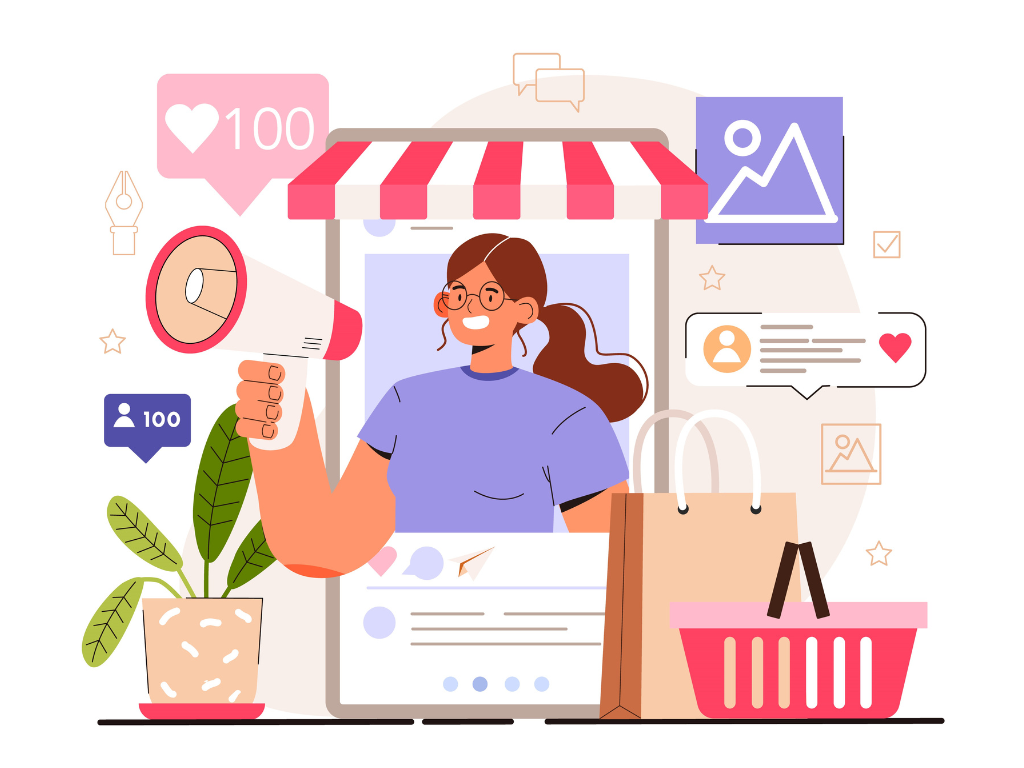
Understanding how to start selling digital products isn’t just about creating them; it’s also about how you market them. The key is to generate excitement and let your potential customers know what you’ve got. Here’s how you can create a buzz:
Tips to create buzz around your Digital Products
- Teasers and previews: Share sneak peeks of your product on different platforms. This could be a sample chapter of an eBook or a demo of a software tool.
- Launch events: Host an online webinar or live stream to launch your product, making it an event people look forward to.
- Customer testimonials: Share reviews and experiences from beta testers or first customers. Genuine feedback can be very persuasive.
Leveraging key marketing strategies
- Social media: Platforms like Facebook, Instagram, and Pinterest are ideal for visual products, whereas LinkedIn and Twitter might be better for B2B offerings. Regular posts, stories, and engaging content can help you connect with your audience.
- Content marketing: Create valuable content that’s related to your product. Blog posts, videos, and podcasts can provide useful information and draw attention to your products.
- Email marketing: Use emails to nurture leads by providing value, then introduce your products in a natural, helpful way.
- Incorporating SEO: When starting to sell digital goods, search engine optimization is key. Use the right keywords, make your website fast, and keep it organized to help people find you in search results more easily.
- Influencer and blogger outreach: Since many consumers rely on recommendations, teaming up with influencers and bloggers can be beneficial. They can introduce your products to a new, trusting audience.
- Affiliate programs: An affiliate program can extend your reach where affiliates promote your product for a commission. This can be a cost-effective way to drive sales.
- Offering a lead magnet: A lead magnet could be a free mini-course, a template, or a discount on a first purchase to entice people to give you their contact information. This can be a powerful tool to start a relationship with potential buyers.
By using these methods, you can create a solid marketing strategy for your products. Now that your marketing is working and you’re making sales, it’s time to think about growing your business.
Let’s explore how you can make more sales and reach more people, a key step if you’re learning how to start selling digital products. Read on further!
Scaling Your Digital Product Business
As early as now, it’s crucial to think about how you can grow even further. Here are some effective strategies and considerations for expanding your reach and your product line.
1. Growing your digital product offering
Expanding your product range is an excellent way to scale your business. When considering how to start selling digital products, think about offering a wider variety of items that match your specialty or making better versions of what you already sell. If you want to sell more products, consider packaging them together or offering special items for different seasons to keep your selection interesting.
2. Incorporating subscriptions and memberships

Subscriptions and memberships create steady income and turn one-time shoppers into repeat customers. This approach builds a devoted group of supporters for your products, keeping the conversation going with your customers. But, remember to add more value over time. Use their suggestions to improve and update what you offer.
3. Optimizing listings and competitive pricing
To improve visibility and attract more buyers, optimize your product listings with clear, concise descriptions, high-quality images, and relevant keywords. It’s also key to set prices that can compete. Regularly check what your competitors are doing price-wise to ensure your strategy is spot-on, without selling yourself short. This keeps you competitive and maintains your product’s value.
4. Providing excellent customer service
Exceptional customer service can set your digital product business apart from competitors. Respond promptly to customer inquiries and complaints. Provide clear, detailed product guides and FAQs. Utilize customer feedback to refine your products and customer service practices continually.
By following these strategies, you are not just selling; you’re creating an experience that customers come back to. As you keep evolving with your community’s needs, you ensure the longevity and growth of your business. This approach is crucial when exploring how to start selling digital products effectively.
Conclusion
The journey of selling digital goods holds vast potential and remarkable advantages. Learning how to start selling digital products allows you to sell as much as you want without keeping physical stock. Plus, it’s easy to reach customers all over the world, anytime. This means you can make more money with less cost. Overall, digital products open up a simple and profitable way to do business.
To recap the steps on how to start selling digital products, we covered essential aspects to help guide you through this journey:
- Digital Vs. Physical Products
- What Is The Best Digital Product To Sell Online?
- What Digital Products Can You Sell?
- Setting Up Your Digital Storefront
- Creating Your First Digital Product
- Marketing Your Digital Products
- Scaling Your Digital Product Business
Are you ready to bring your ideas to life? Your journey begins with the first step. Go ahead, and let the digital world boost your business to new levels of success. Remember, if you have any questions about how to start selling digital products, we’re here to assist you!
